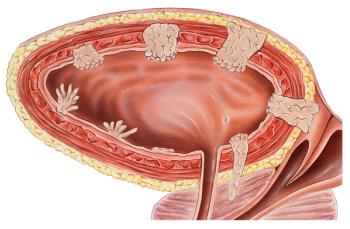
FDA Approves Tissue Expander for Breast Reconstruction
The FDA has approved a new device that allows for the expansion of soft tissue in two-stage breast reconstruction surgery conducted after mastectomy.
The US Food and Drug Administration (FDA) has approved a new device that allows for the expansion of soft tissue in two-stage breast reconstruction surgery conducted after mastectomy. The AeroForm wireless tissue expander is a balloon-like device that has a soft expandable polymer shell that can gradually be filled with saline or air, allowing time for breast tissue and muscle to stretch prior to undergoing breast reconstruction.
“This tissue expander may result in fewer office visits for patients by allowing a patient to partially control their breast tissue expansion,” said Binita Ashar, MD, director of the Division of Surgical Devices at the FDA’s Center for Devices and Radiological Health, in a press release. “Patients need to speak with their surgeons about what type of tissue expander is appropriate for them and the benefits and risks of using an expander following their mastectomy.”
The AeroForm expander would be used in place of existing saline expanders, which are expanded by the surgeon and use a needle to pierce the skin and inject saline into the expander through a port injection area. The AeroForm tissue expander is filled with air and there is no need for a needle. The patient has some control over how slowly to expand the device at home.
The device was approved based on the results of a clinical trial of 99 patients using the AeroForm expander and 52 patients using the saline expander. The majority of patients using the AeroForm (96.1%) and saline expander (98.8%) were able to have their breast tissue successfully expanded and exchanged to a breast implant.
According to the FDA, the device has two main components: the expander, a sterile implant with an outer shell made of silicone, and the controller, a remote dosage controller. The expander contains a reservoir of compressed carbon dioxide. The controller is a hand-held device that communicates with the receiving antenna and electronics located in the expander; it communicates with a valve in the reservoir to release carbon dioxide and gradually inflate the expander. It is pre-programmed to limit the release of a small amount of carbon dioxide to once every 3 hours for a maximum of 3 times per day.
Not all patients undergoing reconstruction are eligible for the device. A surgeon must determine whether the patient is a suitable candidate. Patients must not have any residual tumor at the expansion site and must not undergo MRI while the device is in place.
The most common adverse events seen in the clinical trial of the device were necrosis, seroma, post-operative would infection and procedural pain. No serious adverse events were reported.
The FDA reviewed the data for the AeroForm system through the de novo premarket review pathway, a regulatory pathway for some low- to moderate-risk devices that are novel and for which there is no legally marketed predicate device of substantial equivalence.
Newsletter
Stay up to date on recent advances in the multidisciplinary approach to cancer.


























































































